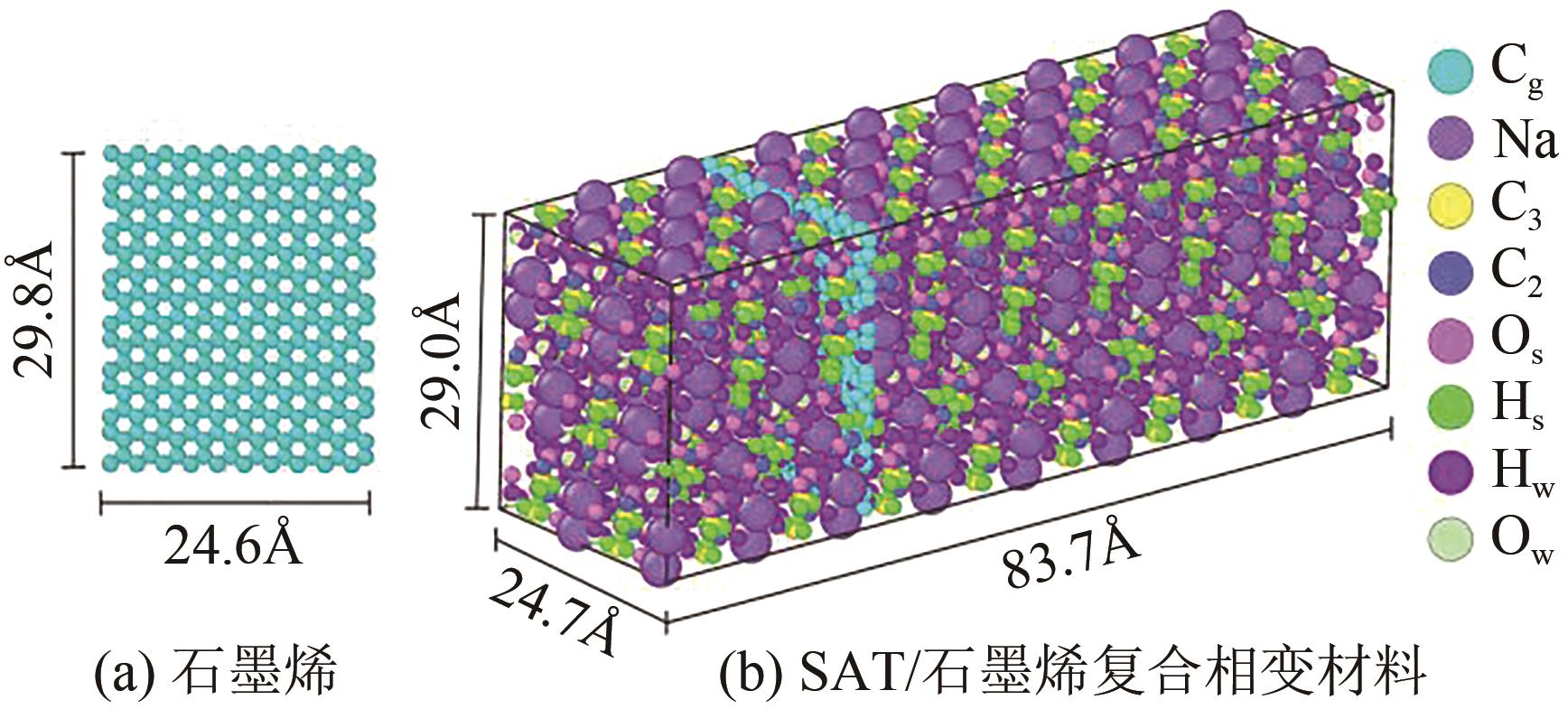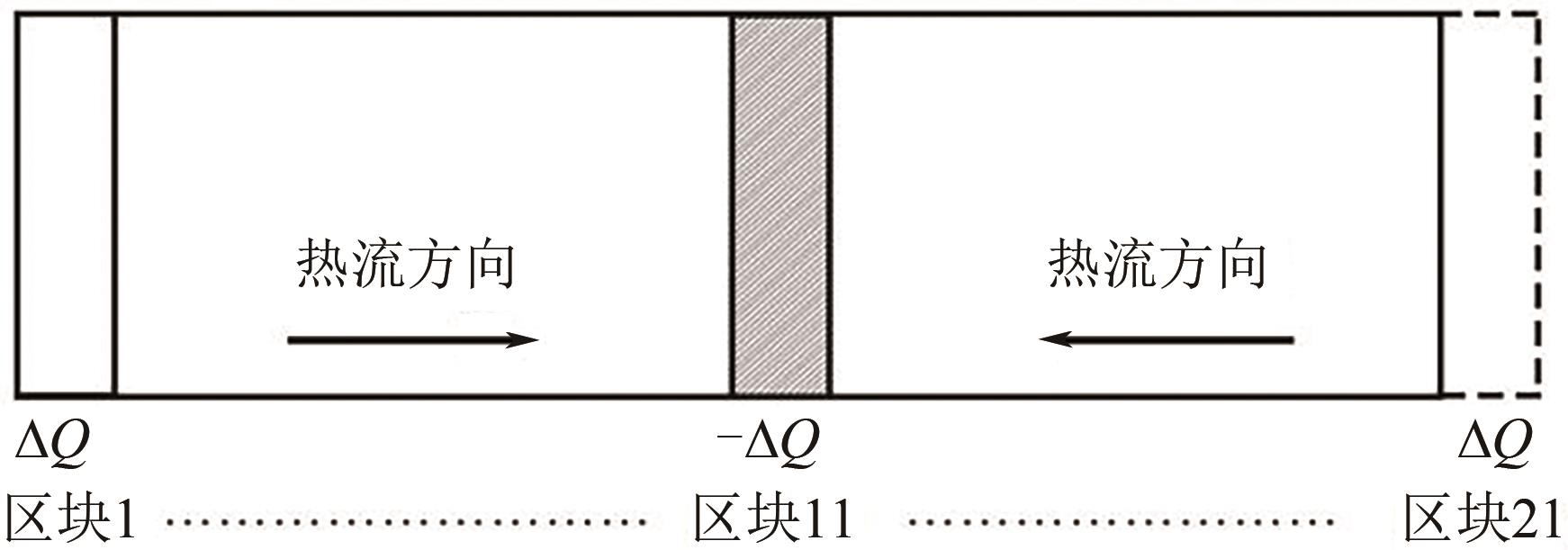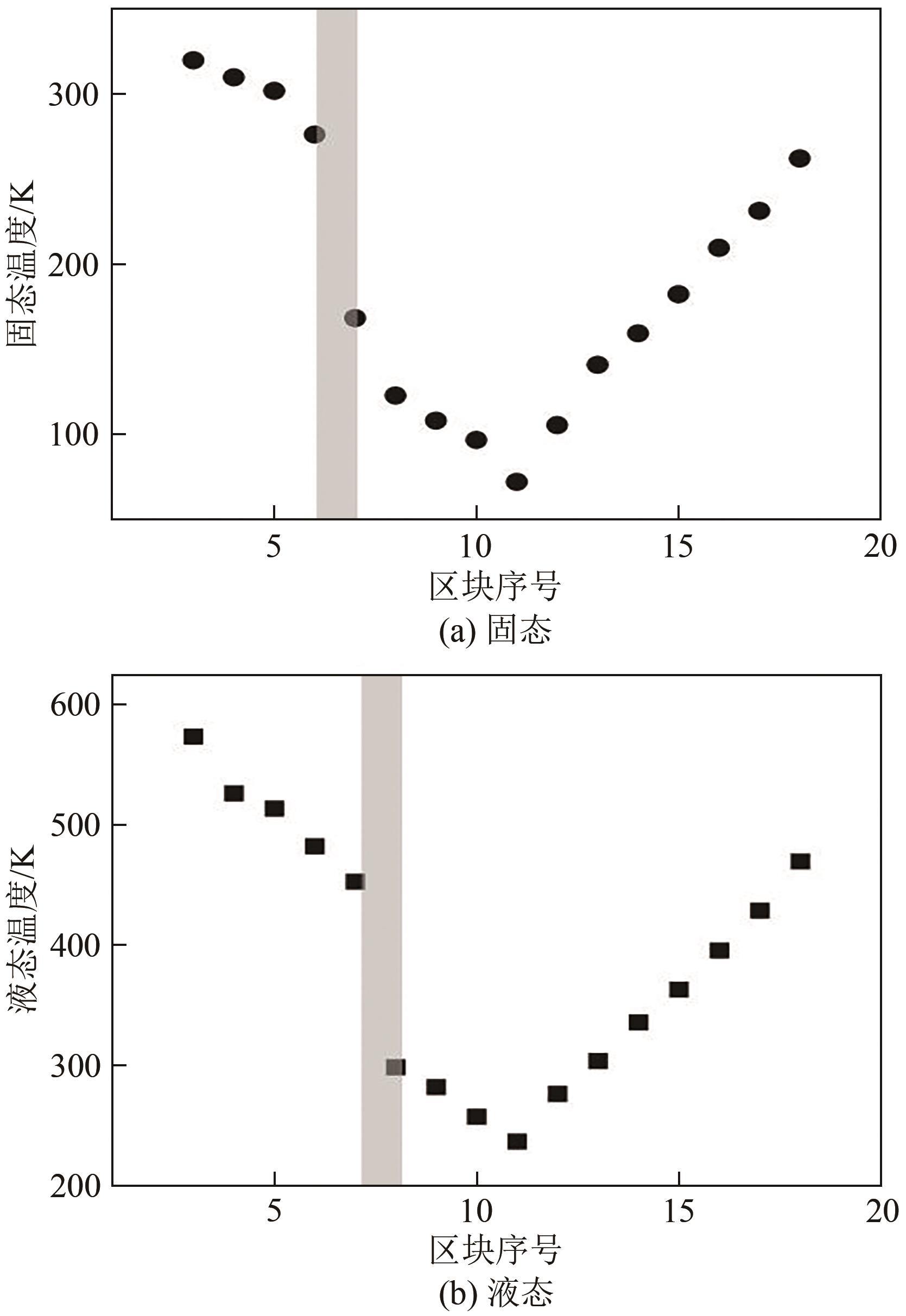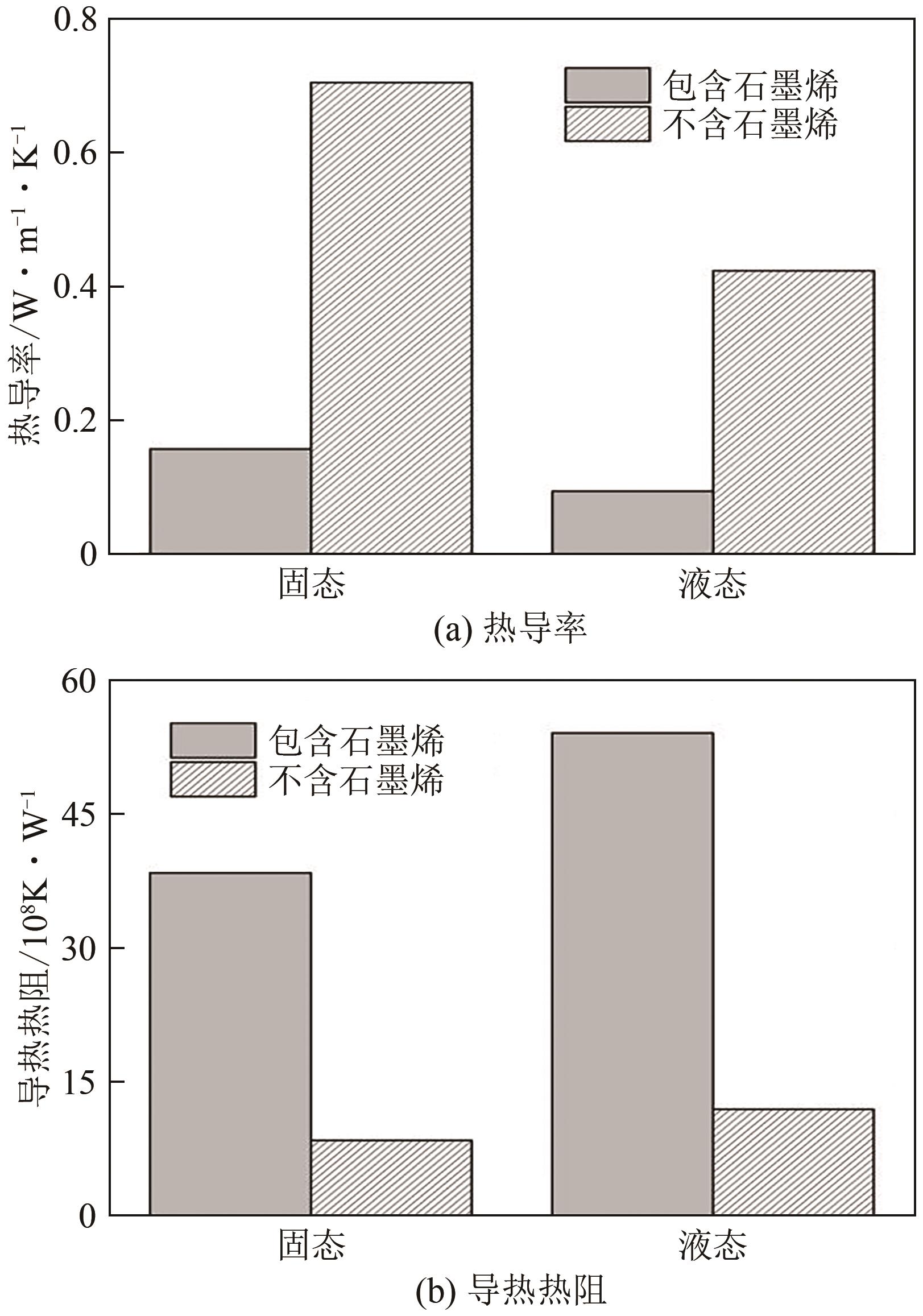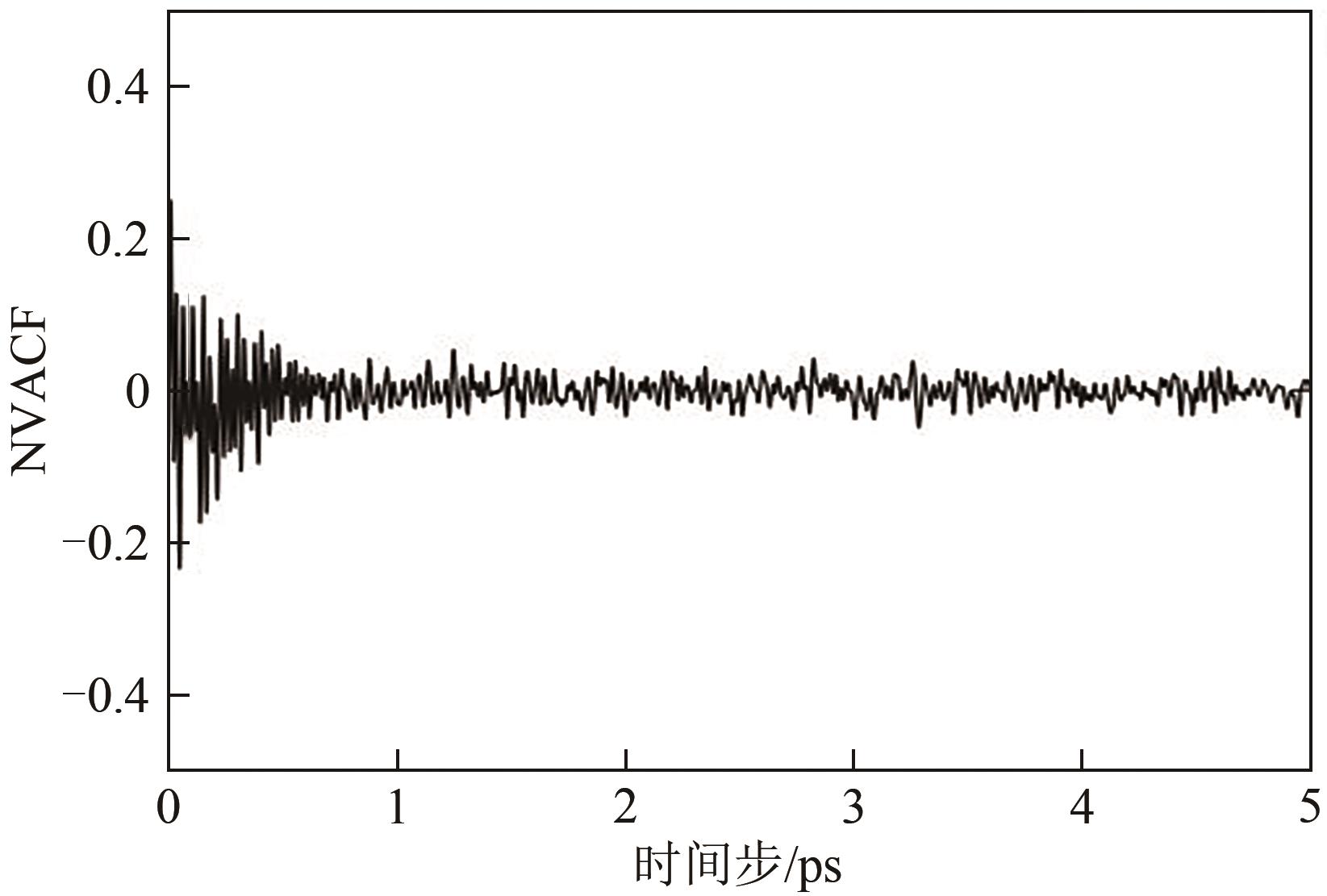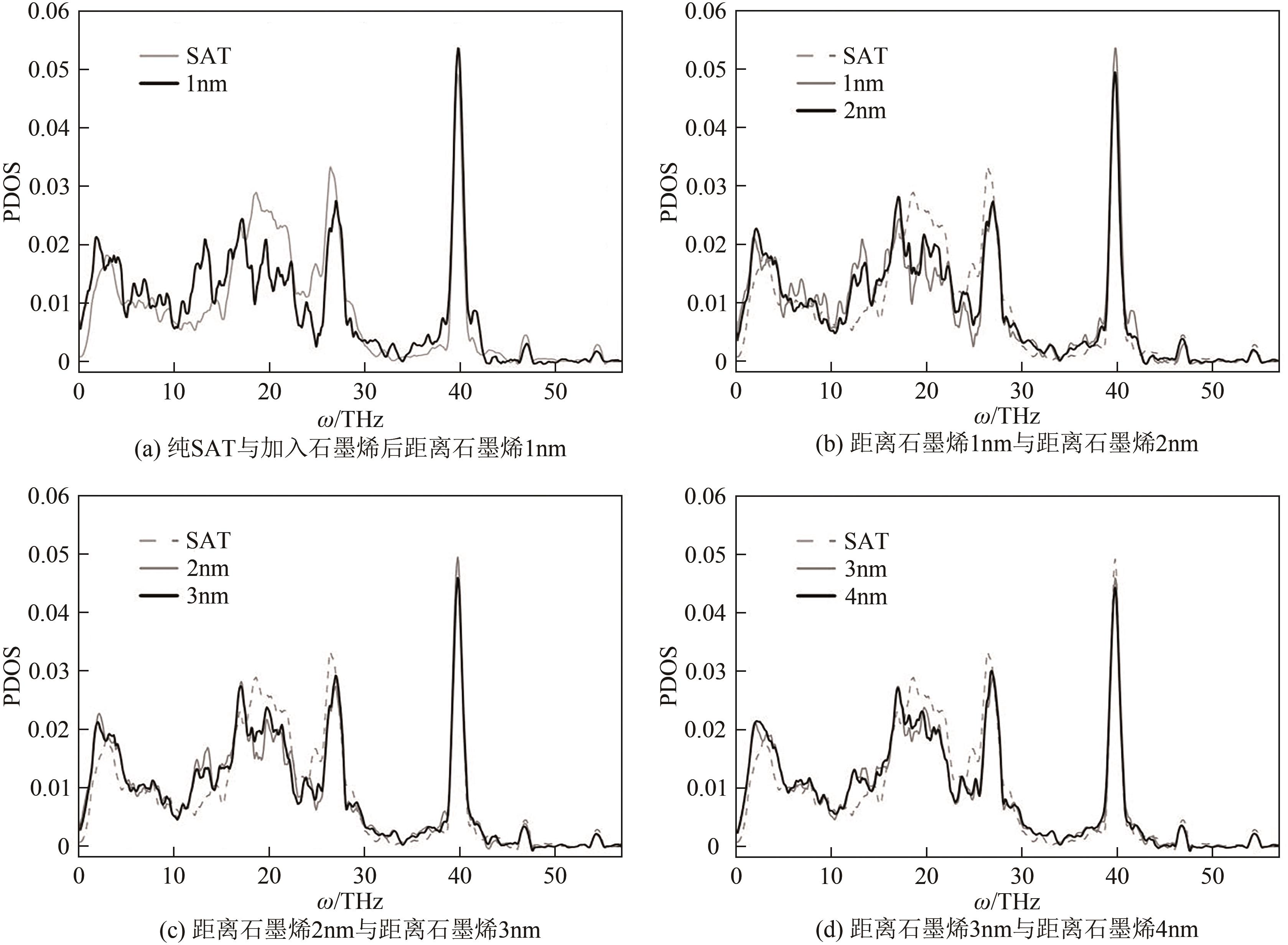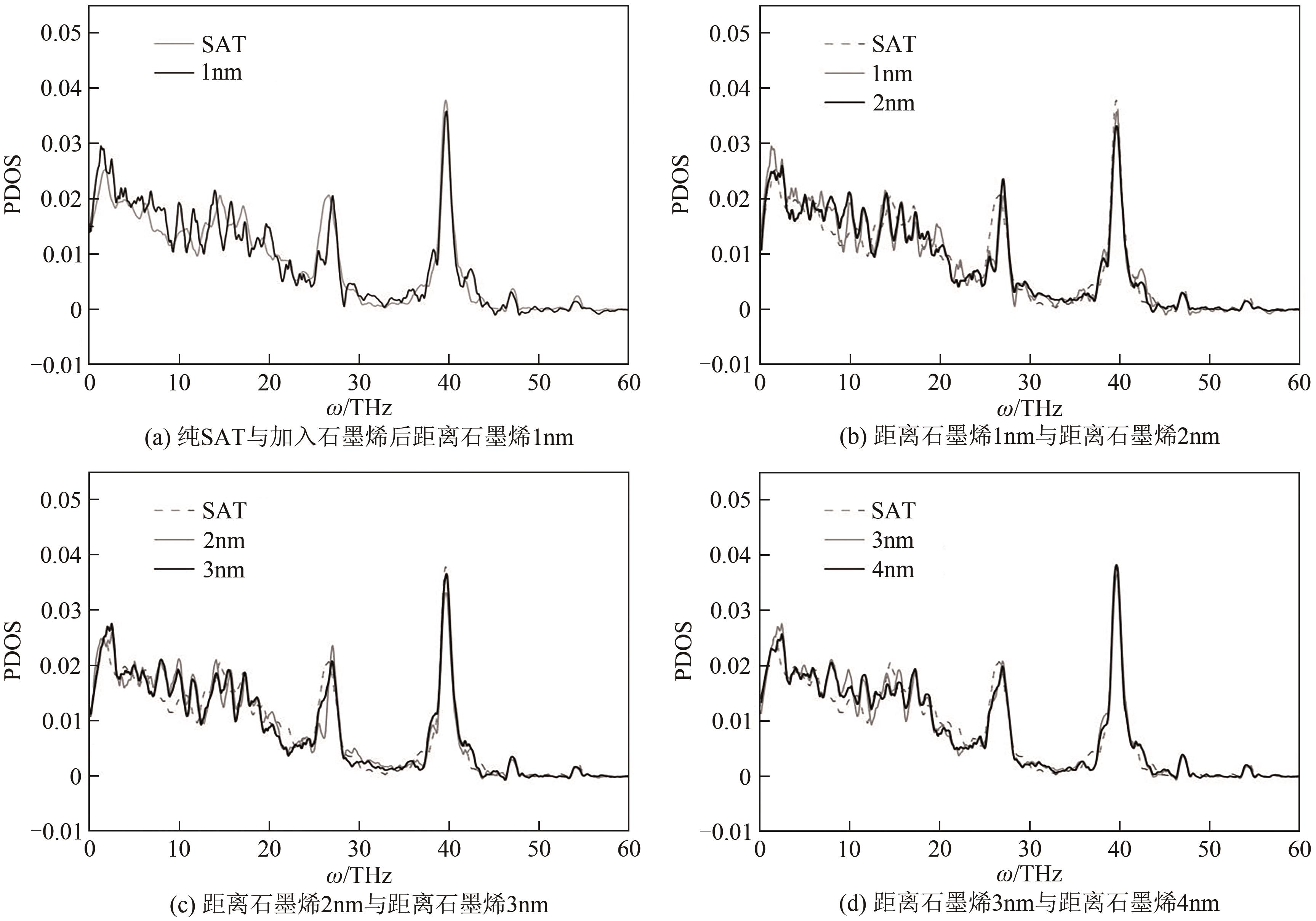Chemical Industry and Engineering Progress ›› 2024, Vol. 43 ›› Issue (12): 6820-6827.DOI: 10.16085/j.issn.1000-6613.2023-2018
• Materials science and technology • Previous Articles
Molecular dynamics simulation of interface thermal resistance of graphene/sodium acetate trihydrate composite phase change material
HAUNG Wendi( ), ZHOU Guobing(
), ZHOU Guobing( ), CAO Baoxin
), CAO Baoxin
- School of Energy, Power and Mechanical Engineering, North China Electric Power University, Beijing 102206, China
-
Received:2023-11-20Revised:2024-01-15Online:2025-01-11Published:2024-12-15 -
Contact:ZHOU Guobing
三水醋酸钠/石墨烯复合相变材料界面热阻的分子动力学模拟
- 华北电力大学能源动力与机械工程学院,北京 102206
-
通讯作者:周国兵 -
作者简介:黄文荻(1999—),男,硕士研究生,研究方向为强化传热。E-mail:vendh@ncepu.edu.cn。 -
基金资助:北京市自然科学基金-海淀原始创新联合基金(L212068);北京市自然科学基金(3192034)
CLC Number:
Cite this article
HAUNG Wendi, ZHOU Guobing, CAO Baoxin. Molecular dynamics simulation of interface thermal resistance of graphene/sodium acetate trihydrate composite phase change material[J]. Chemical Industry and Engineering Progress, 2024, 43(12): 6820-6827.
黄文荻, 周国兵, 曹保鑫. 三水醋酸钠/石墨烯复合相变材料界面热阻的分子动力学模拟[J]. 化工进展, 2024, 43(12): 6820-6827.
share this article
Add to citation manager EndNote|Ris|BibTeX
URL: https://hgjz.cip.com.cn/EN/10.16085/j.issn.1000-6613.2023-2018
| 项目 | 文献[ | 文献[ | 文献[ | 文献[ | 模拟结果 |
|---|---|---|---|---|---|
| 热导率/W·m-1·K-1 | 0.6073 | 0.4~0.7 | 0.6217 | 0.5950 | 0.6223 |
| 误差/% | 2.47 | — | 0.097 | 4.59 | — |
| 项目 | 文献[ | 文献[ | 文献[ | 文献[ | 模拟结果 |
|---|---|---|---|---|---|
| 热导率/W·m-1·K-1 | 0.6073 | 0.4~0.7 | 0.6217 | 0.5950 | 0.6223 |
| 误差/% | 2.47 | — | 0.097 | 4.59 | — |
| 1 | FU Wanwan, ZHOU Wei, Geyun LYU, et al. Phase change temperature adjustment of CH3COONa·3H2O to fabricate composite phase change material for radiant floor heating[J]. Case Studies in Thermal Engineering, 2023, 42: 102773. |
| 2 | GU Xiaobin, QIN Shan, WU Xiang, et al. Preparation and thermal characterization of sodium acetate trihydrate/expanded graphite composite phase change material[J]. Journal of Thermal Analysis and Calorimetry, 2016, 125(2): 831-838. |
| 3 | CHENG Jiawen, SHENG Mengyao, ZENG Liping, et al. Thermal energy storage properties of carbon nanotubes/sodium acetate trihydrate/sodium monohydrogen phosphate dodecahydrate composite phase-change materials as promising heat storage materials[J]. Applied Thermal Engineering, 2023, 228: 120469. |
| 4 | GHOSH S, CALIZO I, TEWELDEBRHAN D, et al. Extremely high thermal conductivity of graphene: Prospects for thermal management applications in nanoelectronic circuits[J]. Applied Physics Letters, 2008, 92(15): 151911. |
| 5 | 张文涛. 三水醋酸钠基复合相变储热材料的制备与性能研究[D]. 包头: 内蒙古科技大学,2022. |
| ZHANG Wentao. Study on preparation and performance of composite phase change materials based on sodium acetate trihydrate for thermal energy storage[D]. Baotou: Inner Mongolia University of Science&Technology, 2022. | |
| 6 | 王子扬, 孙方远, 冯妍卉. 界面导热对铜/金刚石复合材料热导率的影响分析[J]. 工程热物理学报, 2023, 44(9): 2514-2520. |
| WANG Ziyang, SUN Fangyuan, FENG Yanhui. Influence of interfacial thermal conductance on thermal conductivity of copper/diamond composites[J]. Journal of Engineering Thermophysics, 2023, 44(9): 2514-2520. | |
| 7 | 吴晨光, 李蓓. 石墨烯取向影响石墨烯/硝酸盐复合材料传热性能的分子动力学模拟[J]. 复合材料学报, 2022, 39(5): 2495-2503. |
| WU Chenguang, LI Bei. Effect of graphene orientation on heat transfer properties of graphene/nitrates composites by molecular dynamics simulation[J]. Acta Materiae Compositae Sinica, 2022, 39(5): 2495-2503. | |
| 8 | TAFRISHI Hossein, SADEGHZADEH Sadegh, AHMADI Rouhollah. Molecular dynamics simulations of phase change materials for thermal energy storage: A review[J]. RSC Advances, 2022, 12(23): 14776-14807. |
| 9 | YU Yinsheng, ZHAO Chenyang, TAO Yubing, et al. Superior thermal energy storage performance of NaCl-SWCNT composite phase change materials: A molecular dynamics approach[J]. Applied Energy, 2021, 290: 116799. |
| 10 | ZHAO C Y, TAO Y B, YU Y S. Molecular dynamics simulation of thermal and phonon transport characteristics of nanocomposite phase change material[J]. Journal of Molecular Liquids, 2021, 329: 115448. |
| 11 | 孙宪航, 任铸, 张国军, 等. 超临界CO2作用下甲苯在活性炭中的脱附机理[J]. 化工进展, 2022, 41(S1): 631-636. |
| SUN Xianhang, REN Zhu, ZHANG Guojun, et al. Study on the desorption mechanism of toluene in activated carbon under supercritical CO2 [J]. Chemical Industry and Engineering Progress, 2022, 41(S1): 631-636. | |
| 12 | 宋超, 叶学民, 李春曦. 纳米颗粒与表面活性剂的自组装行为对硅油-水界面性质影响的分子动力学[J]. 化工进展, 2022, 41(S1): 366-375. |
| SONG Chao, YE Xuemin, LI Chunxi. Molecular dynamics study on the influence of self-assembly behaviors of nanoparticles and surfactants on the properties of silicone oil/water interface[J]. Chemical Industry and Engineering Progress, 2022, 41(S1): 366-375. | |
| 13 | CUI Liu, FENG Yanhui, ZHANG Xinxin. Enhancement of heat conduction in carbon nanotubes filled with fullerene molecules[J]. Physical Chemistry Chemical Physics, 2015, 17(41): 27520-27526. |
| 14 | CAI Xiaoyi, LI Huaizuo, MA Ting, et al. Size effect on thermal transport performance of inserted Cu/Cu3Sn bilayer[J]. International Journal of Heat and Mass Transfer, 2024, 218: 124784. |
| 15 | CAMERON T S, MANNAN K M, RAHMAN M O. The crystal structure of sodium acetate trihydrate[J]. Acta Crystallographica Section B: Structural Crystallography and Crystal Chemistry, 1976, 32(1): 87-90. |
| 16 | PLIMPTON Steve. Fast parallel algorithms for short-range molecular dynamics[J]. Journal of Computational Physics, 1995, 117(1): 1-19. |
| 17 | THOMPSON Aidan P, Metin AKTULGA H, BERGER Richard, et al. LAMMPS—A flexible simulation tool for particle-based materials modeling at the atomic, meso, and continuum scales[J]. Computer Physics Communications, 2022, 271: 108171. |
| 18 | STUKOWSKI Alexander. Visualization and analysis of atomistic simulation data with OVITO—The open visualization tool[J]. Modelling and Simulation in Materials Science and Engineering, 2010, 18(1): 015012. |
| 19 | Florian MÜLLER-PLATHE. A simple nonequilibrium molecular dynamics method for calculating the thermal conductivity[J]. The Journal of Chemical Physics, 1997, 106(14): 6082-6085. |
| 20 | LIANG Fei, DING Jing, WEI Xiaolan, et al. Interfacial heat and mass transfer at silica/binary molten salt interface from deep potential molecular dynamics[J]. International Journal of Heat and Mass Transfer, 2023, 217: 124705. |
| 21 | KONG Lingti. Phonon dispersion measured directly from molecular dynamics simulations[J]. Computer Physics Communications, 2011, 182(10): 2201-2207. |
| 22 | 尹国超, 刘军祥, 于庆波, 等. 三水乙酸钠复合相变材料的制备与热性能研究[J]. 储能科学与技术, 2023, 12(12): 3643-3654. |
| YIN Guochao, LIU Junxiang, YU Qingbo, et al. Preparation and properties of composite phase-change materials with sodium acetate trihydrate[J]. Energy Storage Science and Technology, 2023, 12(12): 3643-3654. | |
| 23 | ARAKI N, FUTAMURA M, MAKINO A, et al. Measurements of thermophysical properties of sodium acetate hydrate[J]. International Journal of Thermophysics, 1995, 16(6): 1455-1466. |
| 24 | 李文琛, 蔡一凡, 严泰森, 等. 三水合醋酸钠/膨胀石墨复合相变材料的制备及其储热性能[J]. 上海交通大学学报, 2020, 54(10): 1015-1023. |
| LI Wenchen, CAI Yifan, YAN Taisen, et al. Preparation and thermal storage properties of sodium acetate trihydrate-expanded graphite as phase change composite[J]. Journal of Shanghai Jiao Tong University, 2020, 54(10): 1015-1023. |
| [1] | MU Ming, ZHAO Weiwei, CHEN Guangmeng, LIU Xiaoqing. Research progress of strain sensor based on laser-induced graphene [J]. Chemical Industry and Engineering Progress, 2024, 43(9): 4970-4979. |
| [2] | XIE Juan, HE Wen, ZHAO Xucheng, LI Shuaihui, LU Zhenzhen, DING Zheyu. Research progress on the application of molecular dynamics simulation in asphalt systems [J]. Chemical Industry and Engineering Progress, 2024, 43(8): 4432-4449. |
| [3] | PAN Tongtong, CUI Xiangmei. Preparation of methylglucamine-functionalized rGO/MWCNTs-OH composite aerogels and its adsorption of boron [J]. Chemical Industry and Engineering Progress, 2024, 43(6): 3386-3397. |
| [4] | LAN Ruisong, LIU Lihua, ZHANG Qian, CHEN Boyan, HONG Junming. Performance and biotoxicity evaluation of sulfur-doped graphene as a cathode for MFC [J]. Chemical Industry and Engineering Progress, 2024, 43(6): 3430-3439. |
| [5] | HUANG Zibo, ZHOU Wenjing, WEI Jinjia. Product evolution and reaction mechanism of low-rank coal pyrolysis based on ReaxFF MD simulation [J]. Chemical Industry and Engineering Progress, 2024, 43(5): 2409-2419. |
| [6] | YAN Yu, XIA Xin, LUO Junpeng, LIU Dapeng, QIAN Feiyue. Effects of peroxide types on the removal of anti-inflammatory medicines in water with rGO/CNTs catalytic membranes [J]. Chemical Industry and Engineering Progress, 2024, 43(3): 1436-1445. |
| [7] | YAN Shoucheng, ZHANG Huihua, XU Qianqian, WANG Yukun. Application of graphene composite supported catalyst in the removal of NO from diesel exhaust [J]. Chemical Industry and Engineering Progress, 2024, 43(3): 1456-1465. |
| [8] | CHEN Linlin, YU Fei, Ma JIE. Preparation of wood-based cellulose/graphene separation membrane and pollutant separation performance [J]. Chemical Industry and Engineering Progress, 2024, 43(3): 1584-1592. |
| [9] | WANG Yansen, HOU Dandan, LI Changjin, QI Liya, WANG Chunyao, GUO Min, WANG Ying. Preparation and properties of graphene oxide/polyacrylic acid conductive and adhesive hydrogels [J]. Chemical Industry and Engineering Progress, 2024, 43(2): 1022-1032. |
| [10] | SHI Ke, MA Feng, SONG Ruimeng, FU Zhen. Diffusion behavior of waste soybean oil rejuvenated bitumen based on molecular simulation [J]. Chemical Industry and Engineering Progress, 2024, 43(12): 6794-6803. |
| [11] | GUO Qilin, GUO Shi, ZHANG Yingbo, PAN Yiyong, CHEN Zhikang, CHEN Shuang, LIU Hui’e, SHEN Qi, GUO Rongrong. Preparation of carbon nanotube-graphene composite aerogel and evaluation of photothermal assisted oil absorption performance [J]. Chemical Industry and Engineering Progress, 2024, 43(11): 6317-6326. |
| [12] | LI Kaipeng, LU Xiaomin, FU Jiao, PEI Feng, CHEN Xinzhi, LIAN Peichao. Preparation of N-doped reduced graphene oxide /black phosphorus quantum dot composite by low temperature photocatalysis and its performance as anode materials for lithium-ion batteries [J]. Chemical Industry and Engineering Progress, 2024, 43(11): 6336-6343. |
| [13] | ZHAO Wei, CHEN Kaikai, JIN Xin, YAN Haibo, ZHANG Shuang. Preparation of reinforced PVDF/GO hollow fiber membranes with TIPS-reinforced method and performance analysis [J]. Chemical Industry and Engineering Progress, 2024, 43(11): 6344-6355. |
| [14] | WU Yan, LI Bin, JU Mingdong, XIANG Wei, WANG Hai, WANG Zhentao, WANG Junfeng, WANG Zhenbo. Strengthening mechanism of oil droplet displacement under the nano-confined shearing flow field: A molecular dynamics study [J]. Chemical Industry and Engineering Progress, 2024, 43(10): 5393-5402. |
| [15] | SHEN Qi, TIAN Xiaowen, ZHANG Wanqing, SUN Leting, HAO Mengyang, YU Jie, DUAN Yingying, LIU Hui’e, CHEN Shuang, GUO Qilin, FAN Mingkan. Preparation of graphene sponge materials and their photothermal evaporation performance [J]. Chemical Industry and Engineering Progress, 2024, 43(10): 5671-5678. |
| Viewed | ||||||
|
Full text |
|
|||||
|
Abstract |
|
|||||
